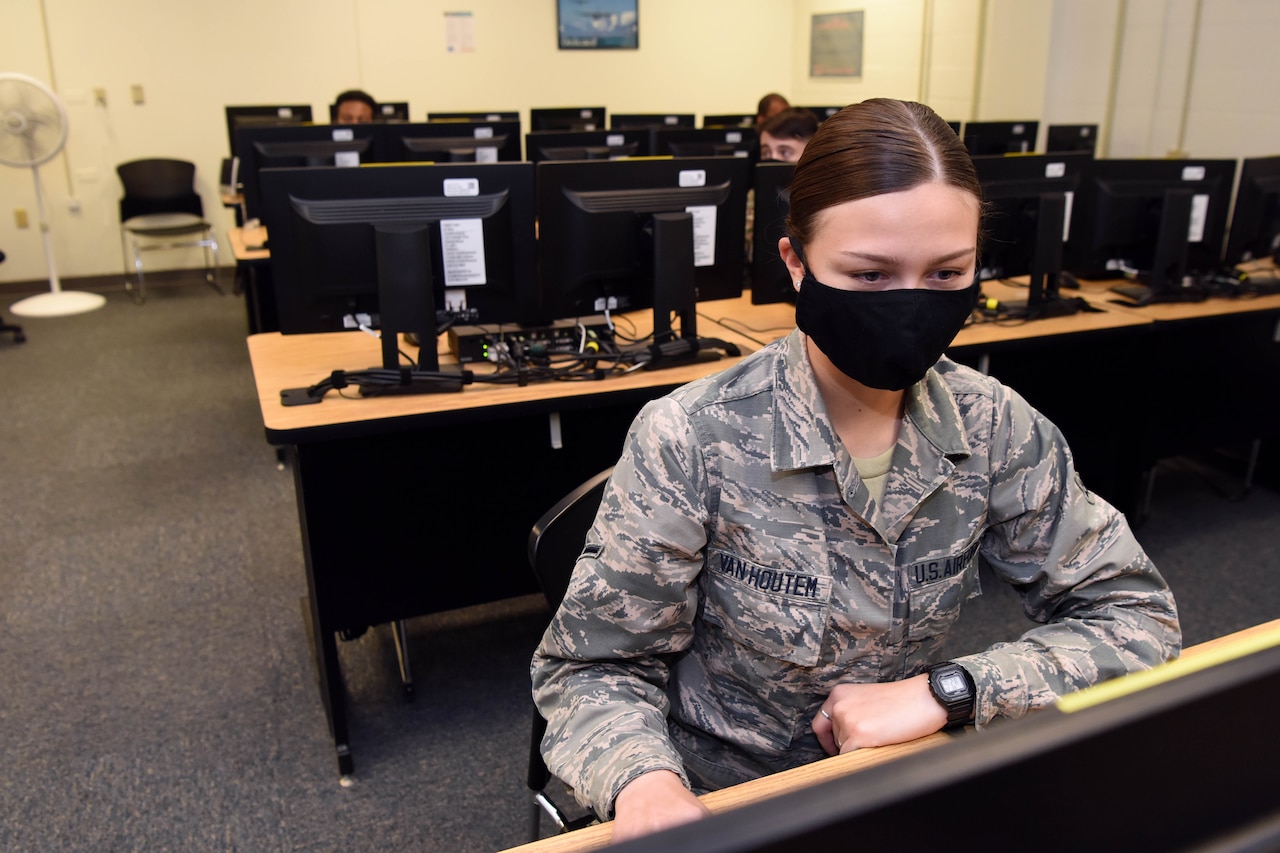May 11, 2020 | BY AIR FORCE AIRMAN 1ST CLASS ABBEY RIEVES
Due to the COVID-19 pandemic, many military organizations
around the world adopted teleworking as the new norm. In compliance with
federal social distancing guidance, the 17th Training Wing shifted two-thirds
of its Apprentice Electronic Signals Intelligence Analyst Course, or 1N2A,
material to digital delivery while safely maintaining the critical hands-on
training component at Goodfellow Air Force Base, Texas.
"Our course was uniquely positioned and able to move to
an integrated distance learning model when the need for social distancing
became apparent," Air Force Tech. Sgt. Patrick Sordyl, the 316th Training
Squadron course supervisor, said. "This allows us to get our students out
of cramped classrooms and move to more open areas on base. Now, instead of
having 14 students sitting next to each other, the students may be in rooms
with only one or two other students."
The 1N2A course is an entry-level course that teaches data
analysis for the pilot's benefit during mission planning.
"This course is the first-level training for electronic
intelligence," Air Force Staff Sgt. Jonathan Preiser, a 316th Training
Squadron instructor, said. "We teach electromagnetic spectrum theory,
radar theory and how it's applied for the Air Force."
A student-centric model of instruction was in the works for
almost a year, but COVID-19 expedited the process by forcing the course to go
digital sooner than expected.
"The Air Force and Marine instructors have transitioned
our course to a more student-centric model of instruction," Sordyl said.
"This allowed us to give our students their materials and learning
objectives so that the students can be in the driver's seat for their
training."
The materials transitioning to virtual learning required
proper security reviews.
"We've reviewed course materials and ensured the
transitioned material was unclassified or for official use only," Air
Force Tech Sgt. Jacob Trentmann, the deputy course director with the 316th
Training Squadron, said. "We've been utilizing a tool called 'Milsuite,'
which can only be accessed with a common access card."
The in-classroom portion of the course had to adapt to meet
the emerging health code standards.
"While in the classroom, we have split the classes in
half," Preiser said. "It actually gives us more time to focus the
training on fewer students, and it's been beneficial."
These course concepts and intelligence skills can also be
applied throughout the whole military domain.
"The greatest advantage of integrating courses with our
sister services is the unique perspectives and experiences that come from
working in a joint environment," Sordyl said. "By having other
viewpoints in the training we conduct, we can provide much more robust and
realistic training to our students while preparing them for joint service
environments."
As a joint base, Goodfellow strives to advance not just the
Air Force, but the entire military force as a whole.
“Our students are shown how intelligence is used not just
with a focus on the airborne domain, but the shipborne and land-based domains
as well," Sordyl said. "On top of that, the students are exposed to
other services' unique cultures, which leads to much stronger teams and better
communication skills when they reach their capstone exercises and go on to
their operational units."
Learning different cultures can also help develop new
perspectives.
"Everywhere our students go after graduation, it's a
completely different mission, with different customers, and working with
different military services," Preiser said. "This is a good initial
opportunity for — in our case both the airmen and Marines — to see the military
and see the career field from different perspectives."
(Air Force Airman 1st Class Abbey Rieves is assigned to the
17th Training Wing.)







No comments:
Post a Comment